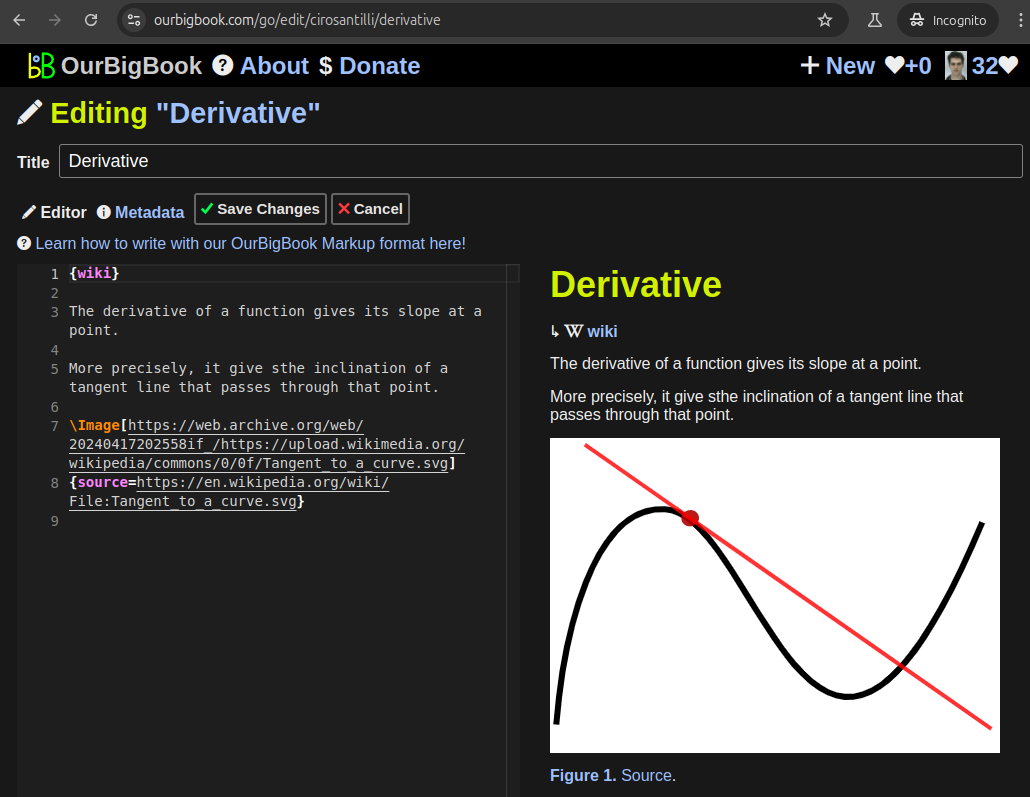Schnirelmann density, named after the Russian mathematician L. L. Schnirelmann, is a concept in additive number theory that quantifies how "thick" a subset of the natural numbers is. In simple terms, it is a way to measure how much of the natural numbers can be "covered" by a given set.
Mathematical markup languages are specialized markup languages designed to represent mathematical expressions, notations, and structures in a way that can be easily understood by both humans and machines. These languages provide a way to encode mathematical concepts in a standard format, enabling consistent representation and manipulation of mathematical content across different platforms and applications. Some of the most notable mathematical markup languages include: 1. **LaTeX**: A high-quality typesetting system widely used for producing scientific and mathematical documents.
Greek letters are commonly used in various fields such as mathematics, science, and engineering to represent constants, variables, and special functions. Here is a list of some commonly used Greek letters and their typical applications: ### Uppercase Greek Letters - **Α (Alpha)**: Often used to denote angles in geometry or coefficients in physics (e.g., α particles). - **Β (Beta)**: Used in statistics to represent the beta coefficient, in finance for stock volatility.
Positional notation is a system for representing numbers in which the position of each digit within a number determines its value based on a specific base or radix. This system allows for the efficient representation of large numbers using only a finite set of symbols (digits). ### Key Features of Positional Notation: 1. **Base (Radix)**: The base of the positional number system determines how many distinct digits are used and the value of each digit's position.
A list of mathematical proofs typically refers to a collection of significant theorems, lemmas, corollaries, or propositions that have been proven within various fields of mathematics. These proofs can vary greatly in complexity and significance, from basic arithmetic properties to advanced concepts in topology or number theory.
The phrase "of the form" is often used in mathematics, science, and logic to describe a specific structure, pattern, or type of expression. It usually indicates that what follows is a general representation or formula that can encompass a variety of specific instances or examples. For example: 1. In algebra, you might say "the solutions are of the form \( ax + b = 0 \)," meaning that the solutions to this equation fit within the structure defined by that format.
Adequality is a term that originates from the field of mathematics, particularly in the context of non-standard analysis. It is used to refer to a notion of "equality" that connects concepts from standard mathematics with those from non-standard frameworks, especially in the study of infinitesimal quantities. The concept is closely associated with the work of mathematicians like Abraham Robinson, who developed non-standard analysis in the 1960s.
"Almost surely" is a concept from probability theory and statistics that describes an event that happens with probability one. When we say that a certain event occurs "almost surely," we mean that the probability of that event occurring is 1, but it does allow for the possibility of the event not occurring in a set of outcomes with probability zero.
In mathematics, "characterization" refers to the process of defining an object or a class of objects by specifying a set of properties or conditions that uniquely identify them. This concept is prevalent in various fields of mathematics, including algebra, topology, analysis, and geometry. Characterization can take several forms, including: 1. **Set of Properties**: An object can be characterized by a list of properties that all instances of that object share.
In mathematics, the term "null" can refer to several concepts depending on the context: 1. **Null Set/Empty Set**: The null set, often denoted as \(\emptyset\) or \(\{\}\), is a set that contains no elements. It serves as the foundation of set theory and is a subset of every set.
Proportionality in mathematics refers to a relationship between two quantities where they maintain a constant ratio or relationship to each other. This concept can be expressed in several forms, most commonly as direct proportionality and inverse proportionality.
Cultural depictions of Pythagoras, the ancient Greek philosopher and mathematician, vary widely across different mediums, contexts, and historical interpretations. Pythagoras is best known for his contributions to mathematics, particularly the Pythagorean theorem, but he is also associated with mysticism, philosophy, music theory, and a unique way of life. 1. **Literature and Philosophy**: - Pythagoras has often been depicted as a mystical figure in ancient texts.
Here’s a list of topics related to exponentials, ranging from mathematical concepts to applications in various fields: ### Mathematics: 1. **Exponential Functions**: - Definition and properties - Graphs of exponential functions - Transformation of exponential functions (shifts, stretches, etc.) 2. **Exponential Growth and Decay**: - Modeling population growth - Radioactive decay - Application in finance (compound interest) 3.
The Hausdorff dimension is a concept in fractal geometry that provides a measure of the "size" of a fractal in a way that extends the traditional notion of dimension. Fractals often exhibit non-integer dimensions, which characterizes their complex structure. Here's a list of some well-known fractals and their associated Hausdorff dimensions: 1. **Point**: - Hausdorff Dimension: 0 2.
The list of regular polytopes and compounds is a classification of specific geometric structures that can exist in various dimensions. Regular polytopes are defined as symmetrical, convex polyhedra (in three dimensions) or their higher-dimensional analogs. Compounds are arrangements of two or more regular polytopes that are interpenetrating or sharing space in a symmetrical manner.
"Rhythm of Structure" can refer to different concepts depending on the context in which it's used. Here are a couple of interpretations: 1. **Architecture and Design**: In architecture and design, the "rhythm of structure" may pertain to the repetition of elements in a design that creates visual harmony and balance. This can include patterns in columns, windows, or the arrangement of materials that create a sense of movement and flow in a space.
"Im schwarzen Walfisch zu Askalon" is the title of a work by the German writer and artist Nelly Sachs, who was awarded the Nobel Prize in Literature in 1966. The phrase, which translates to "In the Black Whale to Ascalon," evokes rich imagery and themes typical of Sachs' poetry and prose, often touching on themes of exile, suffering, and the search for identity.
Pinned article: Introduction to the OurBigBook Project
Welcome to the OurBigBook Project! Our goal is to create the perfect publishing platform for STEM subjects, and get university-level students to write the best free STEM tutorials ever.
Everyone is welcome to create an account and play with the site: ourbigbook.com/go/register. We belive that students themselves can write amazing tutorials, but teachers are welcome too. You can write about anything you want, it doesn't have to be STEM or even educational. Silly test content is very welcome and you won't be penalized in any way. Just keep it legal!
Intro to OurBigBook
. Source. We have two killer features:
- topics: topics group articles by different users with the same title, e.g. here is the topic for the "Fundamental Theorem of Calculus" ourbigbook.com/go/topic/fundamental-theorem-of-calculusArticles of different users are sorted by upvote within each article page. This feature is a bit like:
- a Wikipedia where each user can have their own version of each article
- a Q&A website like Stack Overflow, where multiple people can give their views on a given topic, and the best ones are sorted by upvote. Except you don't need to wait for someone to ask first, and any topic goes, no matter how narrow or broad
This feature makes it possible for readers to find better explanations of any topic created by other writers. And it allows writers to create an explanation in a place that readers might actually find it.Figure 1. Screenshot of the "Derivative" topic page. View it live at: ourbigbook.com/go/topic/derivativeVideo 2. OurBigBook Web topics demo. Source. - local editing: you can store all your personal knowledge base content locally in a plaintext markup format that can be edited locally and published either:This way you can be sure that even if OurBigBook.com were to go down one day (which we have no plans to do as it is quite cheap to host!), your content will still be perfectly readable as a static site.
- to OurBigBook.com to get awesome multi-user features like topics and likes
- as HTML files to a static website, which you can host yourself for free on many external providers like GitHub Pages, and remain in full control
Figure 3. Visual Studio Code extension installation.Figure 4. Visual Studio Code extension tree navigation.Figure 5. Web editor. You can also edit articles on the Web editor without installing anything locally.Video 3. Edit locally and publish demo. Source. This shows editing OurBigBook Markup and publishing it using the Visual Studio Code extension.Video 4. OurBigBook Visual Studio Code extension editing and navigation demo. Source. - Infinitely deep tables of contents:
All our software is open source and hosted at: github.com/ourbigbook/ourbigbook
Further documentation can be found at: docs.ourbigbook.com
Feel free to reach our to us for any help or suggestions: docs.ourbigbook.com/#contact






